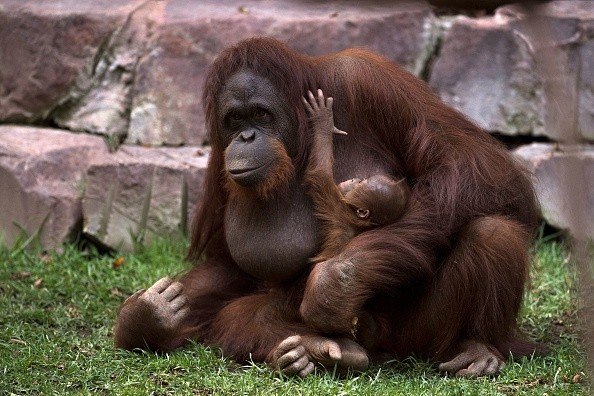Orangutans can make use of stone tools even without prior training, according to research published in the open-access journal PLOS ONE by Alba Motes-Rodrigo and colleagues from the University of Tübingen, Germany.

Tool Making and Use Tested in Captive Male Orangutans
Two orangutan males (Pongo pygmaeus) in captivity at the Kristiansand Zoo in Norway were tested to know if they could make and use tools, as per Phys.org.
They had never been taught or shown examples of the desired behaviour before. Two baited puzzle boxes required orangutans to cut through rope or silicon skin in order to obtain a food reward were provided for each orangutan.
Orangutans swung hammers at the walls and floor of their enclosure, but neither struck the stone core. One orangutan used a human-made sharp flint flake to cut the silicon skin in a second trial, which solved the puzzle. This is the first time cutting behavior has been observed in orangutans who have not been trained or enculturated.
Researchers demonstrated how to hit the core to generate a flint flake to three female orangutans at Twycross Zoo in the UK to see if primates could learn the remaining stages from watching others. After these examples, one female proceeded to use the hammer to strike the core, aiming the blows at the edge as shown.
This is the first time that orangutans that have not been raised by humans have been observed using stone tools on their own.
Origin of Stone Tool Use
Striking with stone hammers and recognizing sharp stones as cutting tools may have existed in humans' last common ancestor with orangutans, 13 million years ago, according to the authors' observations.
According to the authors' explanations, no previous research has shown that orangutans can use sharp stones as cutting tools in their natural habitat.
Researchers also discovered that they frequently engage in lithic percussion, which can result in the removal of sharp stone fragments from their bodies, according to Science Daily.
Relationship Between Orangutans and Humans
Humans have been hunting orangutans for food for a very long time. At least 40,000 archaeological sites at Niah Caves in Malaysian Borneo have yielded burnt bones, which are nevertheless viewed as semi-human by some Malaysians, Indonesians, and indigenous tribes in the region.
Humans and orangutans share 95% to 97% of their genetic make-up. Tourists should avoid handling them because they are particularly susceptible to human infections, such as hepatitis B and tuberculosis. These two species of primate are particularly vulnerable to heart disease in old age.
Orangutans are among the most intellectual animals, scientist and conservationist Birute Mary Galdikas told the Associated Press. It's not uncommon for orangutans to utilize tools in the wild, where Galdikas has been studying the apes for more than four decades. Galdikas added that orangutans have shown incredible creativity in their abilities to break out of confines in captivity.
Related Article: Tinder for Orangutans: Dutch Researchers Use Tablets to Gauge Apes' Preferences for Potential Mates
For more news, updates about orangutans and similar topics don't forget to follow Nature World News!
© 2025 NatureWorldNews.com All rights reserved. Do not reproduce without permission.





